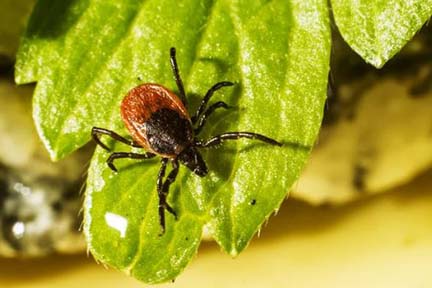Press Release FOR IMMEDIATE RELEASE: May 21, 2025 CONTACT: Laina Stebbins, 517-241-2112, [email protected] Residents urged to take action to prevent tick bites this season LANSING, Mich. – The Michigan Department of Health and Human Services (MDHHS) is encouraging Michigan residents to take steps to avoid tick bites while enjoying the outdoors. Tick-borne diseases, particularly Lyme disease and anaplasmosis, are increasing across the state. Lyme disease cases in Michigan have increased by 168% over the last five years. The state recorded 1,215 cases in 2024, as compared to 452 cases in 2020. Anaplasmosis cases in Michigan have seen an almost fivefold increase over the last five years, with 82 cases in 2024 compared to 17 in 2020. “Preventing tick bites is the best way to prevent tick-borne diseases, including Lyme disease and anaplasmosis,” said Dr. Natasha Bagdasarian, chief medical executive. “If you find a tick attached to your body, promptly remove it. Monitor your health, and if you experience fever, rash, muscle or joint aches or other symptoms, or if you suspect a tick has been attached for more than 24 hours, consult with your medical provider.” Lyme disease, caused by the bacterium Borrelia burgdorferi, is the most common tick-borne disease in Michigan. Anaplasmosis, caused by the bacterium Anaplasma phagocytophilum, is the second most common tick-borne disease and cases are increasing, particularly in the northern parts of the state. Both Lyme Disease and anaplasmosis are transmitted by Ixodes scapularis, commonly known as the blacklegged or deer tick. The blacklegged tick is well-established in parts of Michigan’s Upper and Lower Peninsulas and has been expanding its range over the years. Signs and symptoms of tick-borne disease typically begin one to two weeks after a tick bite, often after being in wooded or brushy areas where ticks commonly live. Early symptoms can be non-specific and include fever or chills, rash, headache, fatigue and muscle aches. Early treatment with appropriate antibiotics can decrease the risk of serious complications. People can protect themselves against Lyme disease and other tick-borne diseases by following these tips: Avoid tick-infested areas.
Use insect repellent.
Perform daily tick checks.
Bathe or shower.
Not all ticks spread the same germs. MDHHS can help to identify ticks you may encounter. Residents can email photos of ticks to [email protected] for identification. Michigan citizens can also submit ticks to MDHHS for identification free of charge. For more information on Lyme disease and other tickborne conditions, or how to submit your tick and/or photo of a tick, visit Michigan.gov/Lyme. Additional information nationally is available at CDC.gov/Lyme. |


